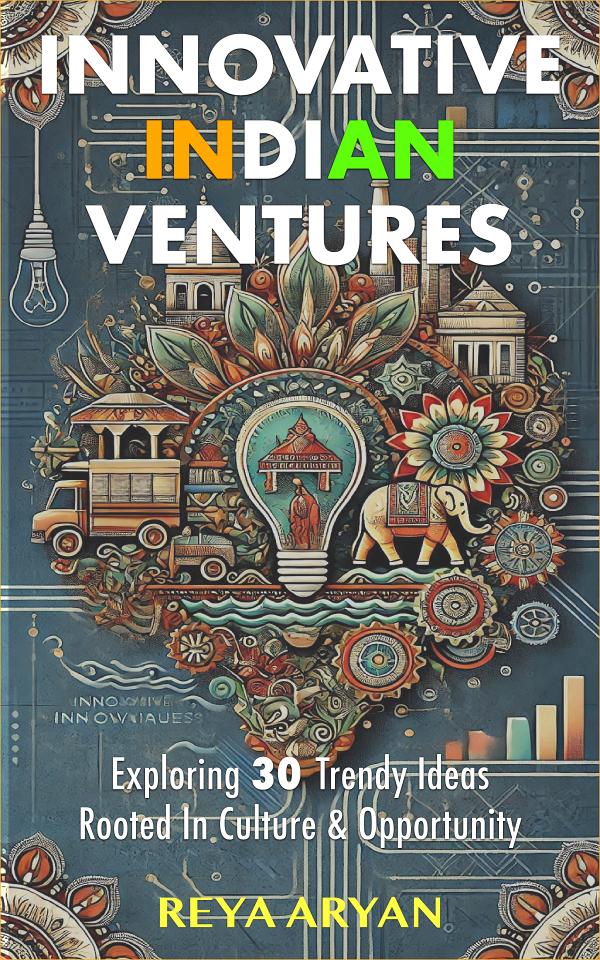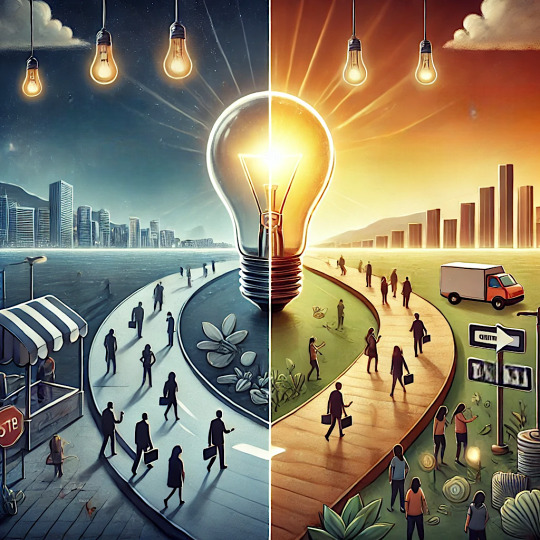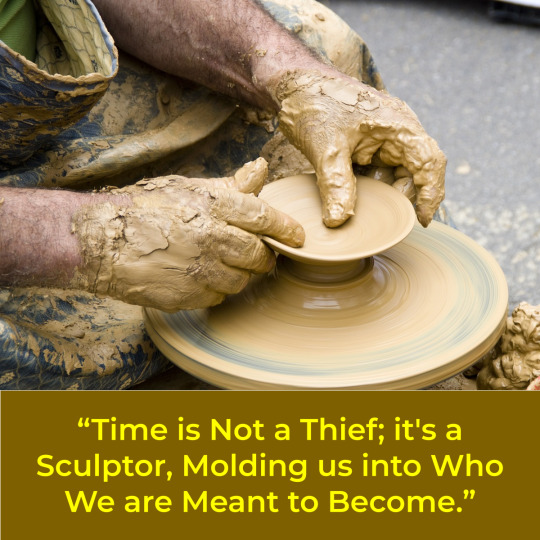Don't wanna be here? Send us removal request.
Text

What trends are shaping future mobility solutions?
The future of mobility is being shaped by several key trends, with a focus on sustainability, technological innovation, and data-driven solutions. Electric vehicles are becoming increasingly popular, accounting for nearly 16 per cent of global passenger car sales in 2023 and innovators are working on optimising battery systems and charging networks to facilitate their roll-out. However, the path to decarbonisation is less clear for heavy road freight, shipping, and aviation, indicating a need for disruptive innovation in these sectors.
Electric Vehicles: Electric vehicles are becoming well-established, accounting for nearly 16 per cent of global passenger car sales in 2023.
Battery Systems and Charging Networks: Innovators are focused on optimising battery systems and charging networks to facilitate the roll-out of electric vehicles.
Decarbonisation: The path to decarbonisation is less clear for heavy road freight, shipping, and aviation, with a need for disruptive innovation.
Autonomous Cars: Embodied AI is being integrated into vehicles to revolutionise the potential and safety of autonomous cars.
Data-Driven Solutions: AI-powered platforms are being used to turn mobility data into actionable insights, empowering cities to develop sustainable urban transportation solutions.
Tthe future of mobility is being shaped by a combination of technological innovation, data-driven solutions, and a push towards sustainability. As these trends continue to evolve, they are likely to have a significant impact on the way we travel and transport goods in the years to come.
2 notes
·
View notes
Text

What are the best business ideas for a small city according to India?
There are millions of ideas even for a small city in India. One of my students has recently published a Worth to Apply book on this subject: Innovative Indian Venture.
This Book Innovative Indian Ventures compiles 30 innovative business ideas, each of which is designed to provide fresh perspectives on how modern-day entrepreneurs can leverage India's vast cultural and economic landscape.
From reviving traditional games to creating virtual experiences, these ideas are bound to inspire individuals seeking to combine their entrepreneurial spirit with a deep respect for India's heritage.
2 notes
·
View notes
Text

In The Future, This One Thing Will Matter the Most. No! It’s Not Money.
Imagine this.
You’re standing in a world 20 years from now. Robots do the cooking. AI handles the taxes. You can even 3D-print your favourite shoes at home. Money, as we know it today, doesn’t hold the same weight anymore. It’s not about how much cash you’ve stacked or what’s in your wallet. The game has changed.
The one thing that will matter in the future is Your Relationships.
Why? Because when everything else is automated, and technology takes over the grind, the only thing left to truly cherish is the human connection. It’s the people you laugh with, cry with, and share your life with. It’s your family, your friends, and even that neighbour who borrows sugar a little too often.
Let’s take this example:
Think of an old man who spent his life chasing money. He worked late nights, bought the biggest car, and lived in the fanciest house. But one day, his health gave out. He couldn’t work anymore. His wealth didn’t make him happy—it didn’t sit by his bedside, hold his hand, or crack a joke to cheer him up. He realized too late that money could buy stuff but not love, care, or companionship.
Now, flip the story.
Imagine another man, not a millionaire but rich in relationships. His friends throw him surprise parties just because. His kids call him every week. His community shows up when he needs them. He’s not alone, no matter what life throws at him. And in the future, that’s the real wealth—having people who stand by you.
Technology is evolving fast. Money might even go digital completely—bitcoins, crypto, or something we can’t even imagine yet. But what won’t change is the joy of hearing someone say, “I’ve got your back.”
Here’s the takeaway: Start investing in people. Call your old friend. Spend time with your parents. Ask your colleagues how they’re really doing. Build bridges, not walls.
Because in the future, when the dust settles, and the world gets quieter, it’s not the money you’ll miss—it’s the moments and the people who made your life meaningful. And if you start focusing on that today, you’ll be the richest person tomorrow.
So, let’s simplify it: Money is nice, but love, trust, and togetherness? That’s priceless.
Want more?
Then his book helps people understand how to improve their relationships by discovering the love languages of their partner, friends, or family. It’s practical, and insightful, and ties perfectly into the message of valuing relationships over material wealth.
1 note
·
View note
Text

The Tale of The Wandering Keys
It all began with a man named Ravi. Ravi wasn’t just disorganized; he was a one-man Bermuda Triangle. His keys, wallet, phone—everything he touched- vanished into thin air. Friends teased him about it, calling him "The Vanisher." But one day, after tearing apart his house to find his misplaced glasses—only to discover them perched on his head—Ravi had an epiphany.
“What if,” he mused, “I could make losing things... profitable?”
That’s how WanderFind was born—a service for the perpetually disorganized.
Ravi didn’t start with technology or complex algorithms. He started with empathy. He knew the panic of losing something essential, the frustration of retracing your steps, and the bittersweet joy of finding a wallet wedged in the couch cushions. So, he designed WanderFind to be more than a service—it was a solution to soothe chaotic lives.
Here’s how it worked: Subscribers received a set of stylish Bluetooth trackers for their belongings and access to a 24/7 concierge service. Lost your wallet? Hit a button on the app, and the tracker beeped, lighting up even the darkest corners. Couldn’t find your phone? A quick text to the WanderFind concierge, and they’ll call or lock it remotely for you.
But the real magic? Ravi made it personal. The app wasn’t just functional; it was playful. If you found your keys for the third time that week, the app would cheer: “Another win for the Wandering Wizard!” Users loved it—they weren’t just clients; they felt part of a quirky club where losing things was no longer a personal failing but an adventure.
Soon, businesses got on board. WanderFind offered services to companies plagued by missing office supplies, shared keys, or even wandering coffee mugs. Ravi created corporate packages with custom trackers, and his business soared.
And that’s the thing: monetizing something as frustrating as losing things worked because Ravi leaned into the pain and turned it into a delightful experience. It wasn’t just about solving a problem; it was about reframing it.
So, don't see it as a flaw the next time you think about what you or others lose—be it things, time, or even ideas. See it as an untapped treasure. Because where there’s chaos, there’s opportunity.
Oh, and speaking of reframing life’s chaos, you might enjoy "Blue Ocean Strategy" by W. Chan Kim and Renée Mauborgne.
It’s a brilliant book on how to carve out a unique market space—just like Ravi did with WanderFind. It’s a must-read for anyone ready to turn life’s messes into successes.
0 notes
Text

The Tale of the Cherry Red Shoes
Picture this:
A little shop sits tucked away in the corner of a busy market. It’s a humble place, not flashy or grand, but there’s a pair of cherry-red shoes in the window that everyone stops to admire. They aren’t just shoes—they tell a story.
A young girl walks in, her eyes sparkling as they land on the shoes. The shopkeeper, an older gentleman with a warm smile, doesn’t start with a sales pitch. Instead, he begins a story.
“These shoes,” he says, picking them up gently, “were inspired by the fireflies in my village. My wife loved those fireflies. She’d always say, ‘They light up the darkest nights.’ One day, I thought, why not create something that makes someone feel as bright as those fireflies made her feel?”
The girl listens, her heart tugged by the simplicity and warmth of his words. She isn’t just hearing about shoes—she’s seeing love, dedication, and a spark of creativity stitched into them. By the time she tries them on, they aren’t just shoes anymore. They’re a part of her story now.
This is the magic of storytelling in selling products. When you sell a product, you’re not just offering an item; you’re offering a connection, a feeling, a memory.
Here’s the secret:
Start with the "why"—the inspiration or the problem that birthed the product. Then, share the journey. Was it made with care, with a purpose, or through a personal struggle? Finally, leave space for the customer to imagine themselves in the story, just like the girl saw herself in those cherry-red shoes.
When people buy into a story, they aren’t just buying a product—they’re buying meaning.
And if you’re looking to deepen your understanding of this craft, I’d recommend "Building a StoryBrand" by Donald Miller.
It’s like having a wise friend walk you through the art of crafting stories that sell, page by page. It’s not just a book; it’s a guide to making your words shine like fireflies.
To Your Success…
1 note
·
View note
Text

“No matter how great your idea is, the reality is NO ONE CARES.” – Sam Altman
This quote, in its essence, is a reality check for dreamers, innovators, and entrepreneurs. It might sound harsh, but it reminds the world isn’t waiting to embrace every new idea with open arms. Let’s break it down:
When you come up with an idea, you might be convinced it’s revolutionary. You see its potential, its brilliance, and how it could change lives. But here’s the hard truth—people are busy with their own lives. They don’t automatically care about your idea. Why? Because an idea is just that—an idea—until it solves a real problem for someone or adds real value to their lives.
This doesn’t mean your idea isn’t great; it just means you need to prove its worth. It’s up to you to make people care. You need to show them how your idea solves their problems, improves their lives, or makes something better, cheaper, or faster.
1. The iPhone Revolution
Before the iPhone, smartphones already existed—BlackBerry, Palm, and others had loyal followings. When Apple introduced the iPhone in 2007, no one immediately thought, “This will change the world.” Some sceptics dismissed it as overpriced and unnecessary.
Steve Jobs knew that just creating a “cool device” wasn’t enough. What made the iPhone successful was Apple’s ability to show people why they needed it. They demonstrated how it could replace multiple devices—your phone, music player, camera, and more—all in one sleek package. Once people saw its convenience and versatility, they cared. Today, the iPhone is a global phenomenon, not because of the idea alone, but because Apple made people realize how it could transform their lives.
2. Airbnb’s Rocky Start
When Airbnb was launched, the idea of strangers staying in your home seemed crazy. The founders—Brian Chesky and Joe Gebbia—had a simple concept: people could rent out their spare rooms to travellers for extra income. Sounds useful, right? But in the early days, no one cared. They struggled to get users and faced constant rejection.
What changed? The founders didn’t give up. They realized they had to convince people of the value of their idea. They focused on creating trust between hosts and guests, introduced user reviews, and ensured a seamless booking experience. Over time, as more people saw the benefits—cheaper accommodations for travellers and extra income for hosts—Airbnb became a household name.
Key Lessons:
Show Value, Don’t Assume It’s Obvious: Your idea might seem brilliant to you, but unless it addresses a pain point or improves something, it won’t resonate with others. Always ask yourself, “Why should anyone care?” and then work to answer that question through your product, service, or pitch.
Execution > Ideas: An idea without execution is like a seed left unplanted. It will never grow into anything meaningful. Successful entrepreneurs don’t stop at the idea stage—they hustle, refine, and iterate until they create something people can’t ignore.
People Are Self-Interested: It’s not selfish; it’s human nature. People care about what benefits them. Your idea has to fit into their lives, solve their problems, or make them feel good. Once they see how it helps them, they’ll pay attention.
How to Make People Care About Your Idea?
Identify the Problem Start by understanding your audience. What’s bothering them? What are their pain points? Your idea needs to connect to these problems.
Simplify the Solution Don’t overcomplicate things. Make it easy for people to see how your idea works and how it helps them.
Tell a Compelling Story Humans love stories. Share how your idea was born, how it can transform lives or even your struggles in bringing it to life. A great story can make people care.
Build Trust If people don’t trust your idea, they won’t adopt it. Show testimonials, provide evidence, and be consistent in delivering on your promises.
Sam Altman’s quote reminds us that success isn’t just about having a great idea—it’s about making people care. And people will only care when your idea solves a real problem or offers something they can’t ignore. So, take your great idea, work hard to prove its worth, and show the world why they should care. Only then will your idea truly shine.
Bonus:
"Start with Why" by Simon Sinek emphasizes the importance of showing people the “why” behind what you do—a key concept in making people care about your ideas.
1 note
·
View note
Text
ઝીણું કાંતીને મોટું કાણું પકડતી એક રહસ્યમય ફિલ્મ : 'સૂક્ષ્મદર્શિની'
તમારામાંથી પણ ઘણાંએ 'દ્રશ્યમ' ફિલ્મના બંને ભાગો જોયા હશે.
એટલે તમનેય ખબર હશે કે 'ગુન્હો છુપાવવો' એ પણ 'આર્ટ' કહેવાય છે. અને જે વ્યક્તિ હજુ સુધી (તેની ગુનાહિત પ્રવૃત્તિ કરતી) પકડાઈ નથી તે 'સ્માર્ટ' ગણાય છે.
તો બસ ! દ્રશ્યમ ફિલ્મની સફળતાનો આંચલ પકડી બીજી એક જબરદસ્ત નસખેંચું મલયાલમ ફિલ્મ (ડિઝની-હોટસ્ટાર) પર આવી ચુકી છે:
'સૂક્ષ્મદર્શિની' (દેશીમાં કહીએ તો માઇક્રોસ્કોપ).
ફિલ્મ 'બદલા'માં જેમ અમિતાભ ખૂબ ભારપૂર્વક તાપસી પન્નુને હિન્ટ આપીને જણાવે છે કે:
"હમે જો સચ લગતા હૈ, વહ ઝરૂરી નહિ કી સબકો લગે. સબકા સચ અલગ-અલગ હોતા હૈ. ઔર જસ્ટિસ ઉસી કો સચ માનતા હૈ જિસે સાબિત કિયા જા સકે, જિસ પર ભરોસા કિયા જા સકે. ઔર ભરોસા જો હૈ....છોટી છોટી બાતોં સે બનતા હૈ, બારીકીયોં સે...ડિટેઈલ્સ ! જિસસે સબૂત બનતે હૈ."
સૂક્ષ્મદર્શિની ફિલ્મ આ વાતને તેના ડાયલોગ્ઝ દ્વારા સાબૂત રાખે છે.
જેમ આપણા દેશમાં 'પાડોશી' પણ એક ધર્મ ગણાય છે. આપણા કરતાં પણ જેઓ આપણા વિશેષ જાણકારી રાખવાનો ધર્મ નિભાવે છે. તેમ આ ફિલ્મમાં પણ પ્રિયા (પ્રિયદર્શિની) એક એવી પાડોશણ છે જેને તેની પાડોશમાં આવેલા નવા-સવા નેબર 'મેન્યુઅલ' પર 'માણસ ખાઉં ! માણસ ગંધાય'ની જેમ કાંઈક રંધાયાનો શક પડે છે.
જે શક ધીમેધીમે રંધાઈને યકીનમાં પલટાય છે. તેમાં કેટલાંક એવા પાત્રો છે, જેઓ આ શક (આઈ મીન શાક)માં કોળું, મરી-મસાલો અને વઘાર નાખવાનું કામ કરે છે.
આપણને સૌને લાગે કે 'ક્રૂર કતલ' થઇ છે. પણ પછી થાય "અરે ! ના રે યાર...આ તો જીવતું પાત્ર છે. તોયે આમ કેમ? આ નહિ દેખાતા ક્રાઇમમાં મારું હાળું કલ્પ્રિટ કોણ છે? અને કલ્પિત કોણ છે?
એની માઁ ને...પછી 'ધડામ' કરતુ રહસ્ય ખુલતી વખતે લાગે કે 'હ્ત્તતેરીકી લ્યા ડાયરેક્ટરીયા ! 'આપણા જ લોકો માટે' સાવ આવું કરવાનું યાર?!?! શયતાન પણ આ જાણી શરમથી ઝૂકી જાય એવું કરવાનું કોણે કહેલું તમને....ભ'ઈ ?"
એક સામાન્ય બાબતને પકડીને શું સૂક્ષ્મદર્શિની પ્લોટ બનાવ્યો છે !
દ્રશ્યમ પછી 'સૂક્ષ્મદર્શિની' ફિલ્મ આવો ઝટકો મારવામાં સફળ થઇ છે. (એટલે જ તેનું રેટિંગ પણ હાઈ છે.) તેના સાઉથ-કલાકારોની દાદુ એક્ટિંગને બાજુએ પર રાખી જેઓ પાછળ રહેલી સાયકોલોજીને આગળ રાખશે તો ફિલ્મ બરોબર 'માણી અને માની' શકશે.
તો હવે જો તમારામાંથી પણ જેમણે મારી આ પોસ્ટને તેમની 'સૂક્ષ્મદર્શિની' નજરથી વાંચી હશે તો હિન્ટ પકડી લેશે. અને પછી ફિલ્મ જોયા બાદ અહીં આવી મને જરૂર કહેશે કે "વાહ ! મુર્તઝાભાઈ, ખરેખર તમારી પોસ્ટથી તો 'માજજા' પડી હોં !" :-P
ખૈર, અત્યારે તો હું બીજી એક દિમાગ-ટચ કોરિયન વેબસિરીઝને પુરેપુરી જોયા પછીની એજન્સિક-અસરમાં લપેટાયો છું. જેની વાત આવનારી પોસ્ટમાં કરીશું.
મુવીનો 'મુવો' મોરલો:
"જેઓ અકારણે (ખુદને બદલે ) બીજે ઝાંખવાની કુટેવ રાખે છે, તેઓ જીવનમાં 'ઝાંખા' પડી જાય છે."

1 note
·
View note
Text

1 note
·
View note
